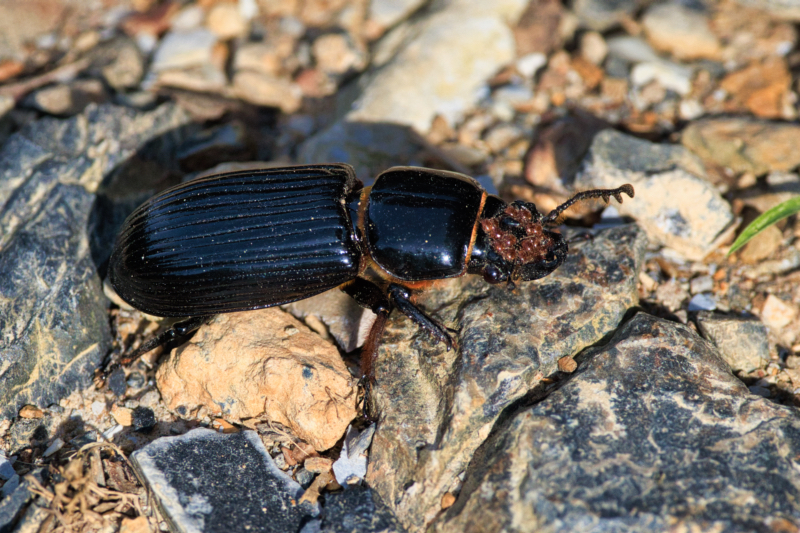I recently photographed a Horned Passalus beetle near Ouachita National Forest in Arkansas. This beetle, along with its tiny companions, offered a fascinating glimpse into the intricate relationships of its ecosystem. Observing it up close revealed some captivating details about its life and the roles it plays in the forest.

The Horned Passalus Beetle
The Horned Passalus beetle, also known as a Bessbug, is a large beetle found throughout North America. These beetles belong to the Passalidae family and are easy to recognize thanks to their prominent horns and sturdy bodies. Their strong legs make them well-suited for navigating forest floors and decaying logs, which they use for both food and shelter. This connection to rotting wood makes them key contributors to forest health.
These beetles are also social insects, often living in family groups. Unusually for beetles, adults care for their young, chewing wood to provide food for their larvae. This cooperative behavior ensures the next generation thrives and highlights their unique place in nature.
Nature’s Recyclers
Horned Passalus beetles play a critical role in forest ecosystems as decomposers. They consume decaying wood, breaking it down and recycling nutrients into the soil. This process supports the growth of new plants and helps maintain a healthy forest environment.
By decomposing wood, these beetles also create habitats for other organisms like fungi and small invertebrates, which rely on the nutrient-rich material. Additionally, they are part of the food web, serving as prey for birds and other predators. Their dual role as decomposers and food sources links various parts of the ecosystem, emphasizing their ecological importance.
Mites: The Beetle’s Tiny Passengers
If you examine a Horned Passalus beetle closely, you might spot small mites hitching a ride. Mites are tiny creatures that often use other animals for transport, food, or shelter. For mites living on these beetles, the nest provides a nutrient-rich environment filled with fungi and organic material. This relationship showcases how organisms depend on one another in complex ways.
Some mites might even benefit the beetles by feeding on harmful fungi or bacteria, while others are simply passengers. Although scientists are still studying these relationships, it’s clear that even the smallest creatures can influence the environment in meaningful ways. This interconnectedness is a hallmark of forest ecosystems.
Photo Details
- Camera: Canon EOS R5
- Lens: RF100-500 mm F4.5-7.1 L IS USM
- Location: Near Ouachita National Forest, Arkansas
- Date/Time: July 3, 2022, 5:50 PM
- Aperture: f/8
- Shutter Speed: 1/2500
- ISO: 1250 (Auto)
- Focal Length: 500 mm
I hope this post gives you a better understanding of the important roles beetles and their tiny companions play in forest ecosystems. If you’ve observed something similar in nature, I’d love to hear about it. Taking a closer look at these creatures reminds us of the incredible complexity and activity happening in the natural world, often hidden in plain sight.
